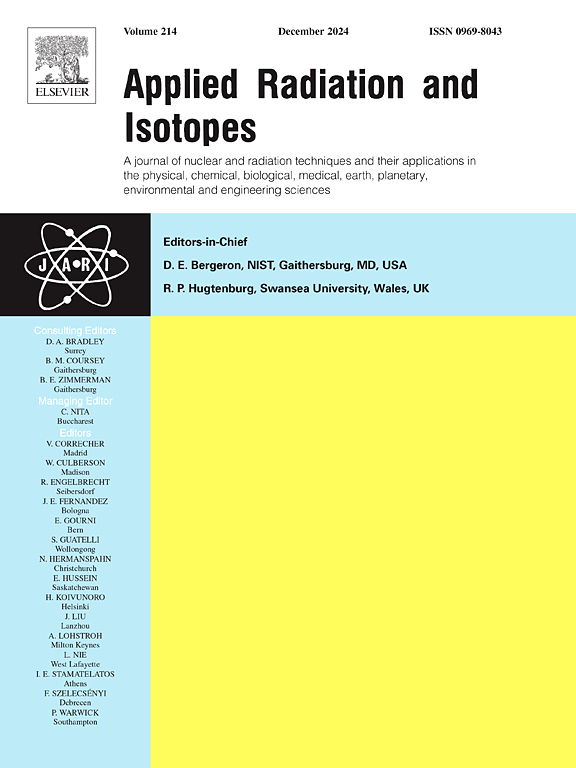99mTc radiolabeling of palm shell charcoal: A preliminary study for potential lung ventilation scintigraphy agent
IF 1.6
3区 工程技术
Q3 CHEMISTRY, INORGANIC & NUCLEAR
引用次数: 0
Abstract
To investigate the potential of activated carbon from palm kernel shell waste for 99mTc-radiolabeled nanocarbon aerosol, a new production technology for carbon-based 99mTc-radioaerosol from such a waste was developed. Treated-palm shell charcoal (t-PSC) was prepared by hydrothermal method to increase the surface area, followed by 99mTc radiolabelling optimization. The optimal 99mTc radiolabeling conditions resulted in an adsorption capacity of 21.43 ng Re/g t-PSC (8.32 GBq 99mTc/g t-PSC). After high-energy milling treatment, fines particle fraction (FPF), and median mass aerodynamic diameter (MMAD) of the milled t-PSC were 28.34 ± 0.61%, and 8.31 ± 2.31 μm, respectively. The results imply that 99mTc-labeled t-PSC has a potential for lung ventilation scan agents with the optimization of milling process to reduce the aerodynamic size within the optimal lung delivery of less than 5 μm.

求助全文
约1分钟内获得全文
求助全文
来源期刊

Applied Radiation and Isotopes
工程技术-核科学技术
CiteScore
3.00
自引率
12.50%
发文量
406
审稿时长
13.5 months
期刊介绍:
Applied Radiation and Isotopes provides a high quality medium for the publication of substantial, original and scientific and technological papers on the development and peaceful application of nuclear, radiation and radionuclide techniques in chemistry, physics, biochemistry, biology, medicine, security, engineering and in the earth, planetary and environmental sciences, all including dosimetry. Nuclear techniques are defined in the broadest sense and both experimental and theoretical papers are welcome. They include the development and use of α- and β-particles, X-rays and γ-rays, neutrons and other nuclear particles and radiations from all sources, including radionuclides, synchrotron sources, cyclotrons and reactors and from the natural environment.
The journal aims to publish papers with significance to an international audience, containing substantial novelty and scientific impact. The Editors reserve the rights to reject, with or without external review, papers that do not meet these criteria.
Papers dealing with radiation processing, i.e., where radiation is used to bring about a biological, chemical or physical change in a material, should be directed to our sister journal Radiation Physics and Chemistry.
 求助内容:
求助内容: 应助结果提醒方式:
应助结果提醒方式:


